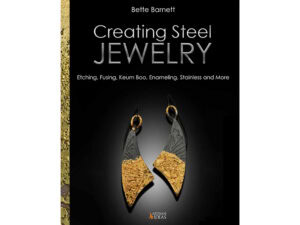The Jewelry of Dorothea Prühl
September 6, 2025–January 3, 2027
The Museum of Fine Arts, Houston, Houston, TX, US
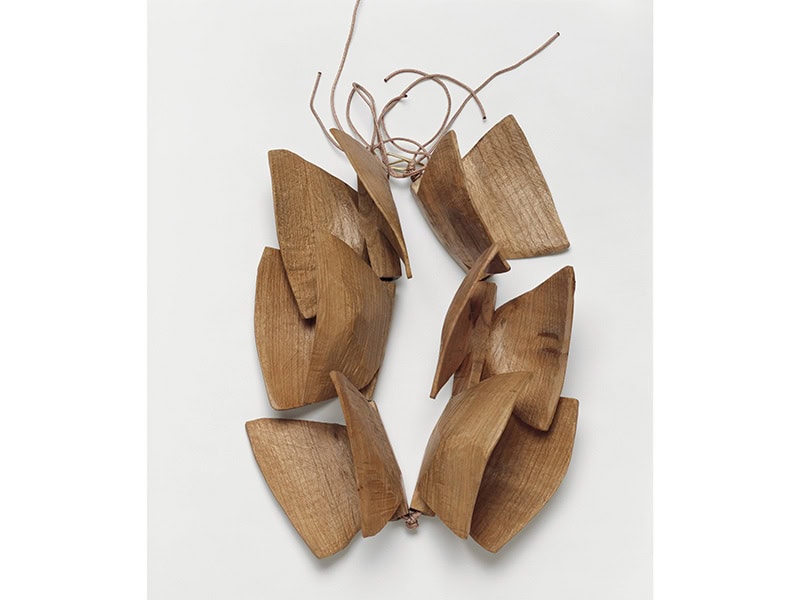
Dorothea Prühl is one of the great jewelry artists of our day. And through January 3, 2027, the Museum of Fine Arts, Houston, is featuring Prühl’s work in a small but impressive show.
Most of the approximately two dozen works on view are necklaces. The majority are promised gifts from the Rotasa Collection Trust. The works were made over almost five decades, from 1976 to 2025, with more having been made in recent years.
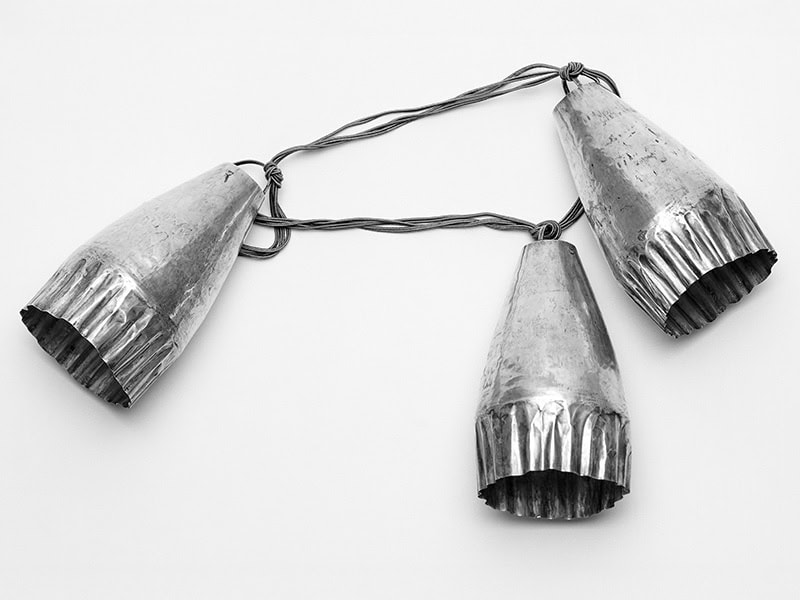
Prühl works in wood and metals, carving and forming the materials into mostly abstract shapes. Many of the pieces suggest birds in flight, or flowers, although there’s also a wonderful necklace of frogs that will make you smile.
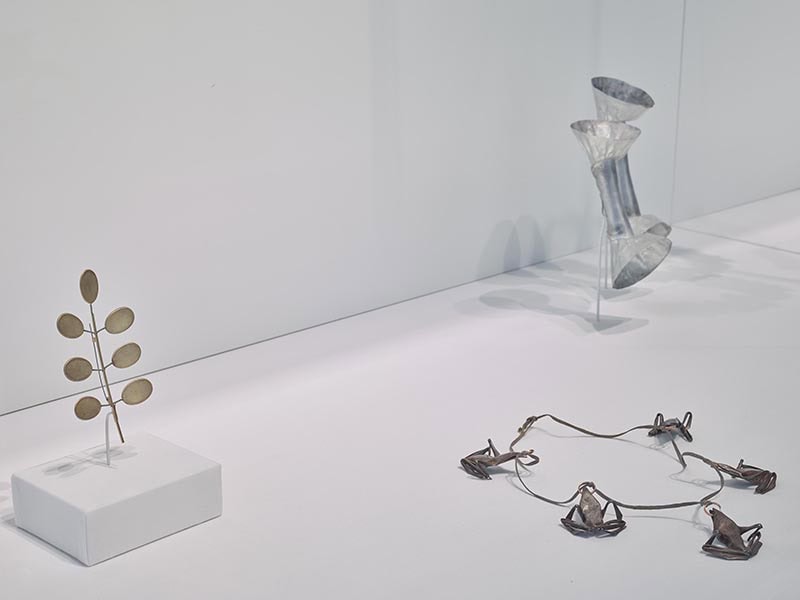
Jewelry is a tactile art, and when the work is enclosed in a glass case, the interplay between wearer and object is altered. Thoughtfully, the museum staff considered this. So for each piece, there is an electronic description and, in the case of the necklaces, there’s also a short video of each work being held, and the sounds each makes as it moves.

In her metal pieces, Prühl uses some combination of aluminum, silver, gold, titanium, iron, and stainless steel. Each necklace sounds slightly different, depending on the materials, with low to high pitches, and with more or less reverberation. Some bring to minds flutes. Another sounds more like a cowbell. Prühl has used cherrywood, alder, and elm in her wooden works, but in recent years, has used more alder wood (which apparently is both stable and easy to carve). Again, different woods make different sounds as the elements of the necklaces interact with each other.

In addition to the sounds of the jewelry, the display allows viewers to be relatively close to the pieces, the better to see each. With the wooden pieces, you stand close enough to see the marks Prühl’s tools left on the wood. This tactile nature is part of the appeal of the wooden pieces; I wanted to run my fingers over all of the wooden elements. Generally, her wooden elements are strung on string, not a metal chain, which adds to the earthiness and unpretentiousness of the pieces.
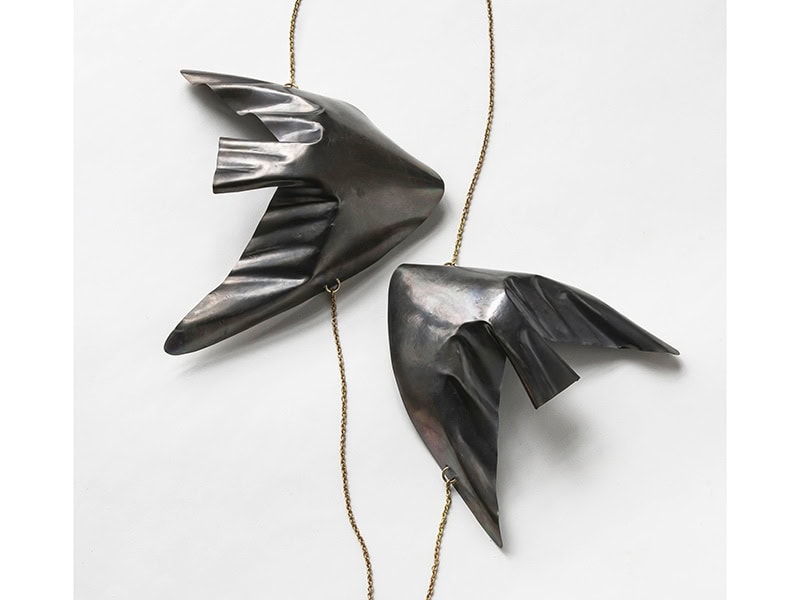
With the metal pieces, while some are almost brutal or primitive looking, such as Windflowers (1989), in silver, others, such as Migratory Birds (2025), in titanium and gold, are so smooth and elegant that you wonder how Prühl could create something that looks as light as air. Others, such as Night Birds (2017), in titanium and gold, are deceptively simple outlines that give the merest suggestions of birds.

Although most of the pieces on display are necklaces, there is one particularly strong brooch, which is actually two matching forms, intended to be worn together: Water Flowers (1989), in aluminum. This is an example of seeing in real life a work that was familiar only from photographs. What I learned: these two companion pieces are big! I would love to see them on the body. But it might be a challenge to put them on.
Prühl was born in 1937, in what was then Germany but is now Poland. She began studying jewelry at age 19, in the aftermath of World War II, at the University of Art and Design in Halle, which became part of East Germany. In 1966, she began teaching there, staying until her retirement in 2002. She was director of the jewelry and metalsmithing department from 1994 until 2002, and her influence on a generation of jewelers is evident every year at Munich Jewelry Week. She still maintains a studio in Halle, where she fabricates her metal pieces, and a second studio in the forests north of the city, where she carves her wooden works.
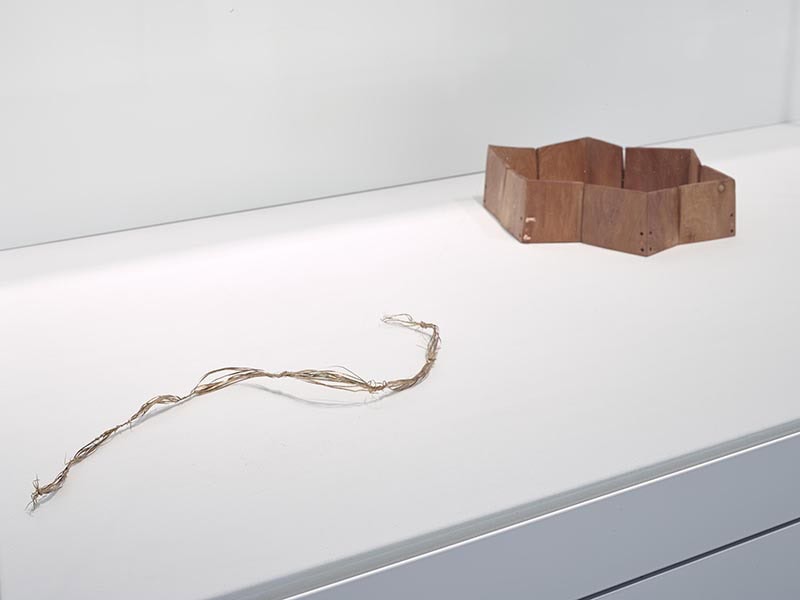
Somehow, this is the first show of Prühl’s work in the United States, and it’s a superb opportunity to see a large number of her pieces in one place. Although her work is found in select museum collections, a large number of her works are, or have been, in private hands. The Rotasa Collection Trust’s promised gift significantly adds to the number of pieces in a major museum. Jewelry lovers should hasten to see this thoughtful and delightful show.
Reviews are the opinions of the author’s alone, and do not necessarily express those of AJF.
We welcome your comments on our publishing, and will publish letters that engage with our articles in a thoughtful and polite manner. Please submit letters to the editor electronically; do so here. The page on which we publish Letters to the Editor is here.
© 2025 Art Jewelry Forum. All rights reserved. Content may not be reproduced in whole or in part without permission. For reprint permission, contact info (at) artjewelryforum (dot) org

